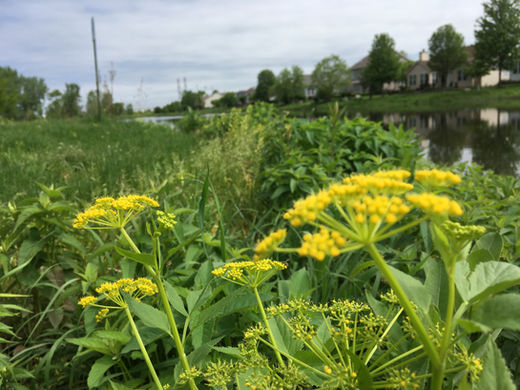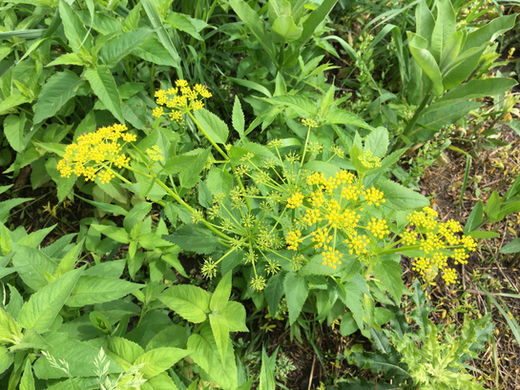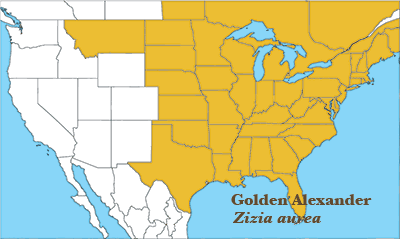Golden Alexanders
Common Name: Golden Alexanders.
Scientific Name: Zizia Aurea.
What to look for? Golden yellow! Tall! Somewhat weedy look. Golden Alexanders are a short-lived perennial that are approximately two to three feet tall. These plants have yellow flowers that are less than one-eighth of an inch long. Each tiny flower has five green sepals, five yellow petals, and five stamens. Golden Alexanders have flat-topped or umbrella-shaped clusters or umbels of these yellow flowers that gather into a large, flat-topped flower head. Later during summer, dry seedheads will turn purple, adding summer interest.
Where can they be found at Carillon Stonegate Pond? In late spring and early summer, you can find the Golden Alexanders around the upper banks along Carillon Stonegate Ponds and the fields adjacent to the woodlands.
How big are they? Golden Alexanders are approximately two to three feet tall. The leaves are up to three inches long and two inches across. Each cluster or umbel of yellow flowers is about two to three inches across.
Where do they grow and thrive? Golden Alexanders are found across the Eastern U.S. – Great Plains to East Coast. These plants occur most often in small colonies in moist woods and meadows, thickets, glades and prairies.
When do they bloom? The blooming period occurs from late spring to early summer, and lasts about one month.
Do birds, insects or other wildlife associate with this plant? The flowers of the Golden Alexanders are attractive to many kinds of insects with shorter mouth parts seeking pollen or nectar, especially bees, wasps, flies, and beetles. And while Golden Alexanders are not a butterfly nectar source, they are a food plant for the larvae of the swallowtail butterfly.
Interesting Facts About the Golden Alexanders:
-
Golden Alexanders grows throughout Illinois but are less common in the southern portion of the state.
-
Golden Alexander is the not a butterfly nectar source, but it is an excellent source of accessible pollen and nectar to many beneficial insects with shorter mouth parts.
-
Genus name (Zizia) honors German botanist Johann Baptist Ziz.
For more information on the Golden Alexanders and sources of information used in this blog (these are the sources that I am using to learn as I blog), please visit Illinois Wildflowers, Missouri Botanical Gardens, University of Texas Wildflower Center and U.S. Department of Agriculture.
The Carillon at Stonegate community is very fortunate to have a variety of wetland, forest and prairie environments conducive to a variety of birds and other wildlife, insects and plants. Our community and the Kane County Forest Preserve do an exceptional job in maintaining this natural environment – both for the benefit of the birds and wildlife and for our residents to enjoy.
Take a hike and see what you can find – and identify!



